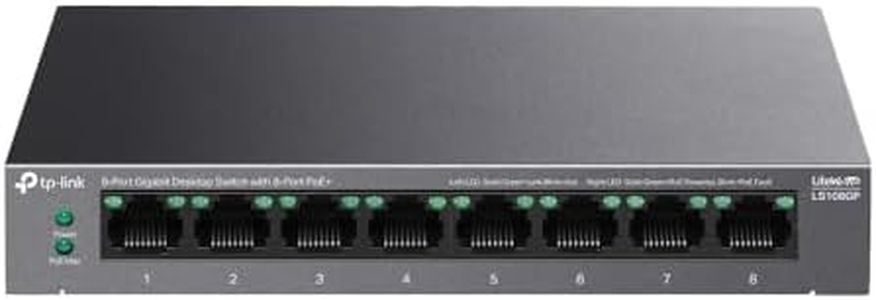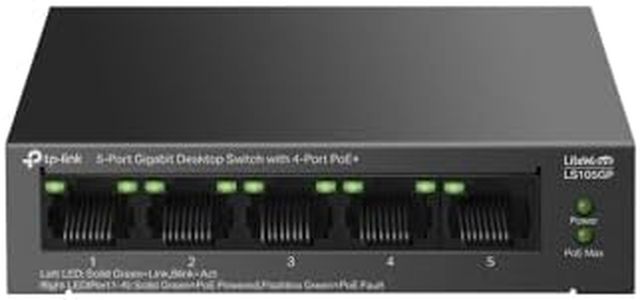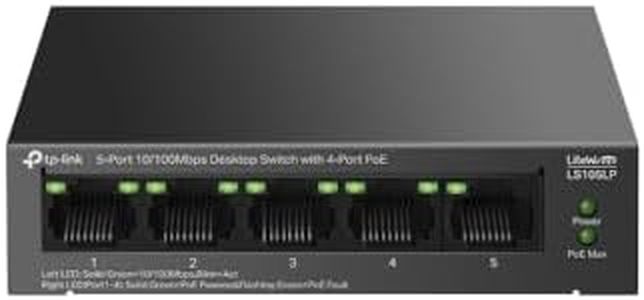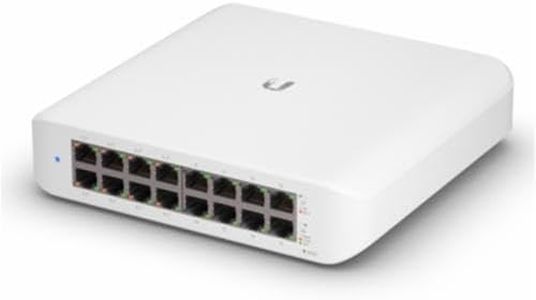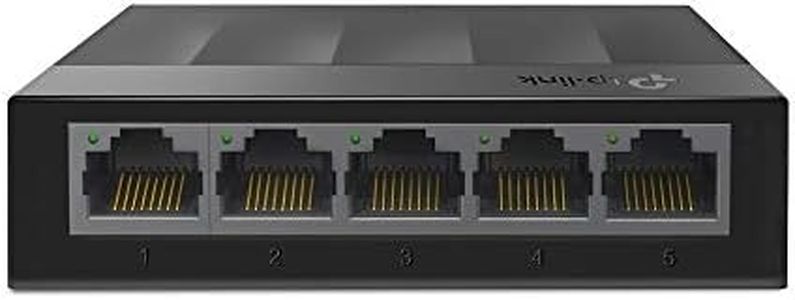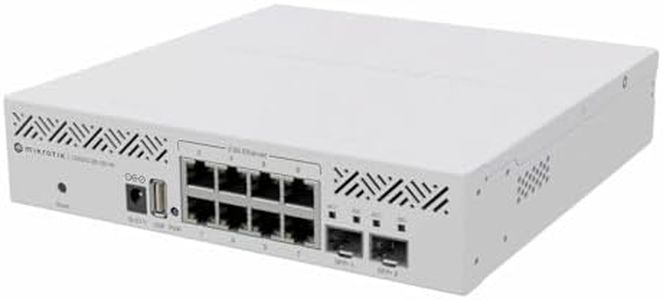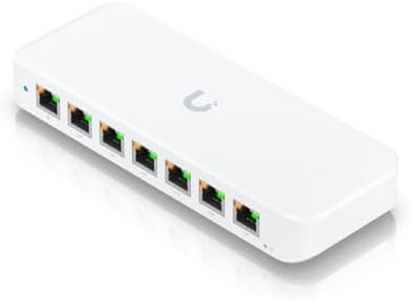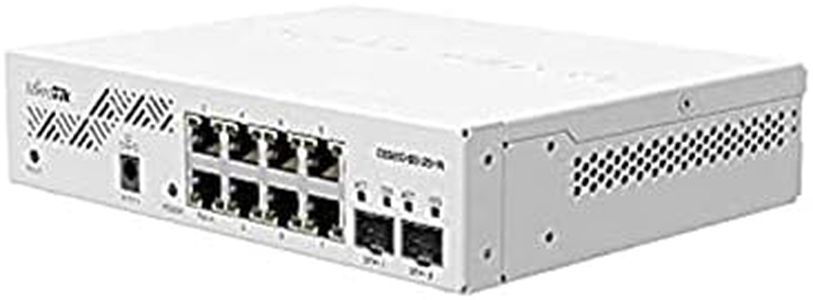We Use CookiesWe use cookies to enhance the security, performance,
functionality and for analytical and promotional activities. By continuing to browse this site you
are agreeing to our privacy policy
10 Best Ethernet Switches
From leading brands and best sellers available on the web.Buying Guide for the Best Ethernet Switches
Ethernet switches are essential devices in any wired network, helping connect multiple computers, printers, or other devices within your home or office so they can share information quickly and reliably. Picking the right Ethernet switch isn’t just about getting the one with the most ports or the cheapest price. Instead, you want a switch that matches what you plan to connect, how fast you want your network to be, and what kind of features you actually need to keep your setup running smoothly. Carefully considering where and how you'll use the switch will ensure you get something that fits your needs without overcomplicating things.Number of PortsThe number of ports on an Ethernet switch determines how many devices you can directly connect to the switch at once. This is important because if you don’t have enough ports, some devices might not be able to access the network. Switches commonly come with anywhere from 5 to 48 ports. Smaller switches (like 5 or 8 ports) are great for home use or small office setups with just a few devices, while larger switches (24 or 48 ports) are suited for big businesses, server rooms, or very tech-heavy homes. You should count up the devices you currently have (computers, printers, smart TVs, etc.) and add a couple extra ports for future growth to decide what size fits you best.
Switching Speed (Data Rate)The switching speed refers to how fast data can move through the Ethernet switch. This is typically shown as 10/100 Mbps (Fast Ethernet), 1 Gbps (Gigabit Ethernet), or 10 Gbps (10-Gigabit Ethernet). Faster speeds allow more and bigger files to be shared quickly between devices, and make activities like streaming, gaming, or big office tasks run smoother. For most home and small office networks, Gigabit Ethernet (1 Gbps) is a solid choice because it balances speed with compatibility. Fast Ethernet (100 Mbps) is outdated for high-performance needs, while 10-Gigabit is really only helpful for large offices or places with massive data streams. If you transfer lots of big files, stream a lot, or want to be future-proof, aim for at least Gigabit speeds.
Managed vs. UnmanagedAn unmanaged switch is a plug-and-play device—just connect your devices and it works, no setup needed. This makes them perfect for users who just want to expand their wired network simply and affordably. Managed switches, on the other hand, let you control and monitor your network traffic, set up security rules, and prioritize some devices over others. These features are useful for IT professionals or anyone who needs detailed control and security for complex networks. If you’re just connecting a few devices at home or in a small office, unmanaged is usually the way to go. Choose a managed switch only if you know you need customized network control or advanced security.
Power over Ethernet (PoE)Power over Ethernet, or PoE, means the switch can actually provide power to compatible devices like security cameras, wireless access points, or VoIP phones through the same cable that carries their network data. This eliminates the need to run separate power cables. Some switches have PoE on all ports, while others provide it on just a few. If you plan to use devices that require PoE, make sure the switch you choose has enough PoE ports and enough power for everything you want to connect. Otherwise, you can skip PoE if you’ll only be connecting regular devices that plug into a wall outlet for power.
Mounting and SizeEthernet switches come in different physical sizes and are designed to be installed in various places. Desk or desktop models are small and can sit on a table, while rackmount switches are built for mounting in a standard server rack, common in professional or network-heavy environments. Make sure you know where your switch will go—if you’re adding it to your home office, a compact model may be ideal, but if it’s for a business or a network closet, you might want a rackmount unit.
Fanless vs. Fan-cooledSome switches use fans to stay cool, while others (fanless) rely on passive cooling. Fanless switches are quieter and ideal for home or office setups where silence is important, such as bedrooms or meeting rooms. Fan-cooled switches can handle more heat, making them better for large, busy networks, but they do generate noticeable noise. Consider the environment where you’ll place the switch to decide if noise is an issue for you.

